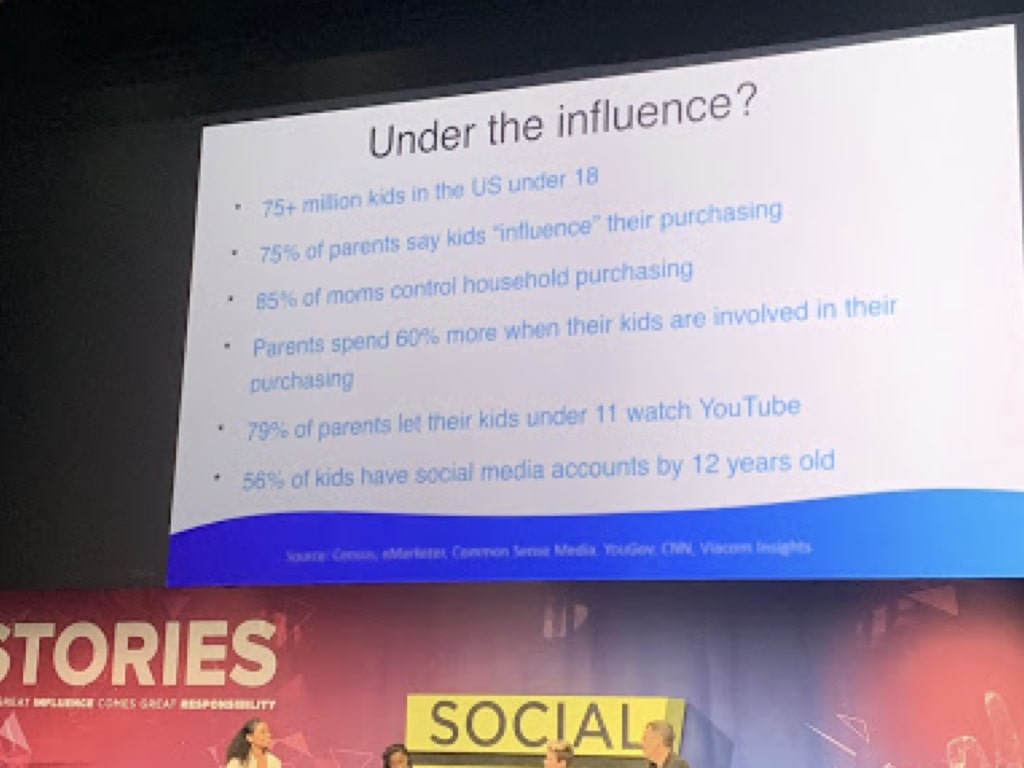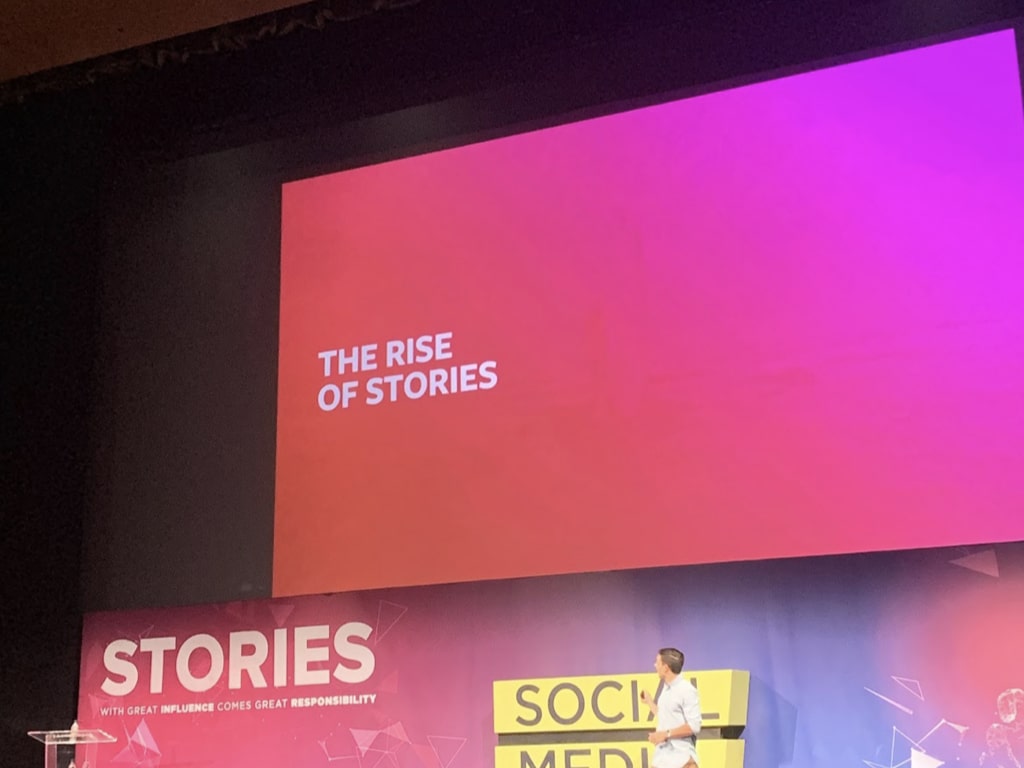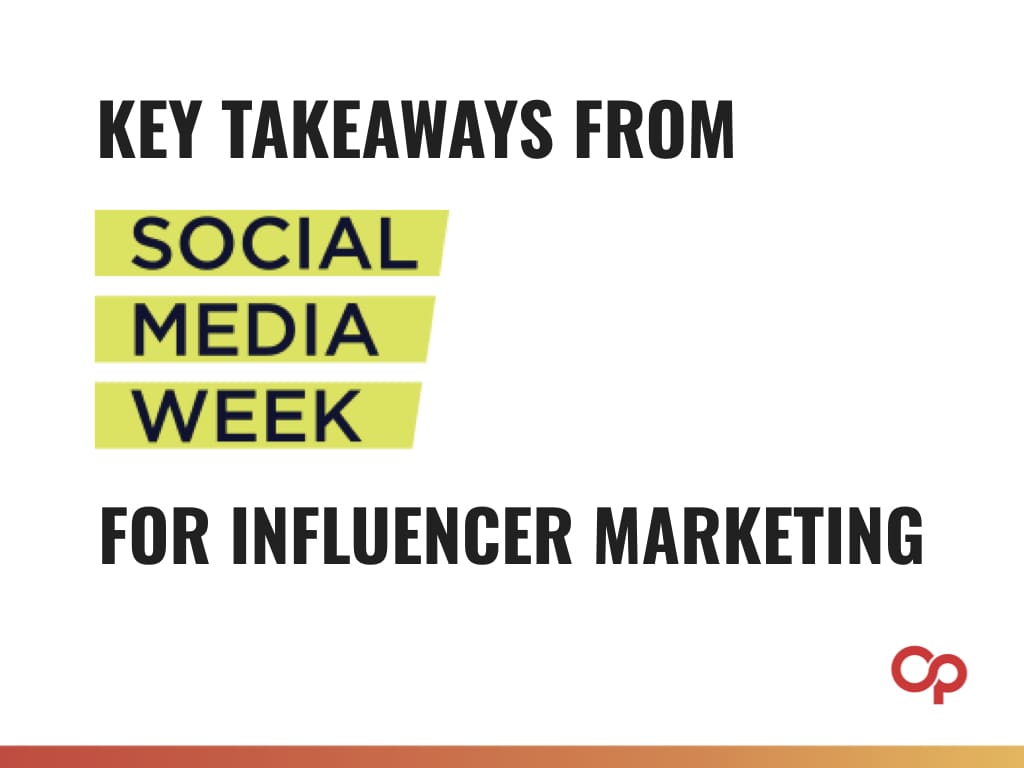Social Media Week LA, which took place on June 12th and 13th at the Broad Stage in Santa Monica, assembled over 200 thought leaders from across marketing and media to discuss this year’s theme: Stories: With Great Influence Comes Great Responsibility.
So why was “Storytelling” the topic de jour for SMWLA’s ten-year anniversary? Well, in 2018 alone, the number of active users on social media rose 13% to 3.2 billion, making social media the world’s most influential storytelling platform.
It’s been fascinating to watch this discussion evolve over time. While the early days saw a greater emphasis on the societal impact of social media, today’s conversation has veered heavily into storytelling and creativity. After all, storytelling is a fundamental human need and a chief way we connect with others.
Every good story needs a protagonist – that’s Storytelling 101. Well, if social media is officially the most influential storytelling platform, then who are the protagonists of the most important stories being told today? That’s right – influencers. Which is why we’re seeing the influencer discussion increasingly take center stage when it comes to all things social media.
With the right strategy, brands can tap into the power of influencers and capitalize on their boundless creativity to engage with new audiences. Panel after panel, speakers reiterated the time honored motto – “In the End, It All Comes Down to Creative Execution.” Having access to strong creative can make or break your campaign, no matter how strategic your idea may be.
Overall, #SMWLA was as informative as it was entertaining. But don’t just take our word for it! Check out some highlights from Day 1 and 2 below
***
Day 1
1. “Kidfluencers” Are Still Booming
From the panel The Kids Are Alright, we saw that the kidfluencer boom is far from over. Almost 80 percent of all kids under 11 watch YouTube, and over half of them own a social media account by 12. As such, we can expect to see an increase in brand partnerships with younger creators, especially when 75% of parents report that their children inform what they purchase.
For brands trying to reach into the swiftly-growing and lucrative kid demographic, “kidfluencers” are indeed the perfect solution.

2. The Rise of Stories
Stories are nothing new to humanity – in fact, research suggests they are a fundamental aspect of human behavior. So what does social media bring to the table that other mediums haven’t been able to provide?
For starters – for the first time in history, ordinary people are the ones telling the stories. This is partly why social media platforms have developed a reputation for delivering more authentic content. With a lack of gatekeepers holding back new and creative ideas, users can turn any idea into a reality – and better yet, get instant feedback on its performance. The combination of abundant data and room for experimentation allows creators to sharpen their skills over time and learn to craft content every bit as good as traditional media.

Let’s take one today’s fastest growing content formats – ephemeral content – as an example of the raw, unfiltered experience people crave.
Products like Snapchat and Instagram Stories allow creators to translate brand messages into relatable stories using their authentic voices – in language we like to use, influencers make content relevant to their audiences.

Day 2
3. Let’s Get Political
In 2019, brands are not only expected to acknowledge political trends, but to take a stand on them. Victor Nguyen-Long, a creative strategist with the Civic Responsibility Project, led a panel on what brands can do to engage with social issues in a strategic way.
While in the past, brands wouldn’t dare touch heated issues with a ten-foot pole, nowadays its how many companies are fostering loyal customers. After all, “the most human company wins” – and customers will examine your social stances when evaluating whether or not to purchase from you. Help them relate to your brand by showing you care about the same important issues they do.
4. The Cannabis Industry Finds Solutions in Influencer Marketing
The cannabis industry is poised to become one of the biggest markets in the world. Still, brands and companies face numerous regulatory hurdles when it comes to marketing their products – and that’s where influencers come in.
Influencers, who are not subject to the same regulatory policies as television, radio, etc.are able to educate and inform their audiences on the plethora of cannabis products available today. Sheena Shiravi, Director of Consumer Communications at Eaze, sat down with Social Media Week founder Toby Daniels, to talk the customer education journey in cannabis (and even order a few samples live from the stage).
As it turns out, one of the chief hurdles in advertising cannabis is a lack of publicly available information. Influencers have become an invaluable resource in educating new customers on the science and safety of cannabis, leading to a more informed consumer base who are more likely to appreciate your brand.
***
Final Thoughts
This year’s #SMWLA opened up many fascinating discussion on the role of Storytelling in society. As the world continues to become more and more connected, social media will become a driving force in how we communicate with one another. We look forward to seeing how some of the hottest trends from this year play out!






